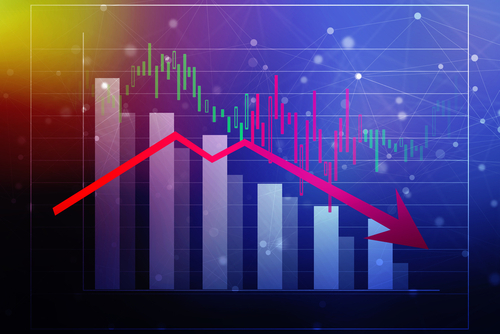The Fed’s crackdown plans on inflation and the corresponding increase in U.S. Treasury yields are affecting the morale of stock market investors. Futures on the major averages trended in red in the early morning trading hours of Monday.
Futures tied to the Dow Jones Industrial Average (DJIA) lost 0.22%, while the S&P 500 (SPX) futures were down 0.50%, as of 5:48 a.m. EST., Monday. Meanwhile, the Nasdaq 100 (NDX) futures dipped 0.98% below parity.
At the end of Friday’s regular trading session, the Dow had gained 0.4%, while the S&P 500 and Nasdaq 100 fell 0.27% and 1.41% respectively, as the fear continued.
On Friday, the benchmark 10-year yield touched a 3-year high, sparking a sell-off in the stock market, led by technology stocks. Market movements during the entire last week were driven by the Fed’s update. The technology sector bore the maximum brunt as has been typical, with the tech-heavy Nasdaq Composite falling 3.9% last week, whereas the Dow and S&P 500 dipped 0.3% and 1.3% respectively. Losses were partially offset by gains in the healthcare sector, which was up by more than 3%.
The Policy Blueprint and its Repercussions
Last Wednesday, the Federal Reserve announced its intent to reduce $95 billion of bond holdings every month from its balance sheet, in order to curb inflation. Moreover, multiple 50-basis-point interest rate hikes have also been planned through 2022.
Fed officials also think that the new wave of Covid-19 and related lockdowns will further fuel the persistent inflation-boosting component supply chain disruptions. Therefore, a more aggressive monetary policy has become necessary to protect the economy.
Again, the U.S. market is also factoring in the inflationary effects of the volatility of oil and energy prices stemming from the ongoing hostility between Russian and Ukrainian forces.
Market participants are expecting one round of half-point hikes at the Fed’s next meeting that is to be held on May 3 and May 4; and another round of a similar hike at the June meeting.
The Fed’s plans have sent the average 30-year fixed-rate mortgage sprinting to 4.9% last week, the highest rate since 2018, as informed by the Mortgage Bankers Association.
Can the Equity Market Recover From the Rate-Hike Cycle of 2022?
At the advent of the pandemic, stimulus money was pumped into the U.S. economy to help with the dwindling demand scenario, and to prop up stocks which had lost significant value. This continued until earlier this year, as the Fed began to warn of multiple rate hikes in order to curb inflation which had been (and still is) ballooning out of control. Nonetheless, one look at the past performances of stocks after such rate hikes shows us that stocks typically rise after an interest rate hike.
There have been five planned rate hike series since 1990, and each time, the S&P 500 regained its lost value after six months of the hike cycle, after initial months of volatility or decline. Experts also recommend against worrying too much about losses, as the equity market has always managed to recover remarkably.
Nonetheless, fears are rife of a recession this year, driven by the Fed’s aggressive tightening of monetary policy. Yet, investors are looking at a further rally in the market and are possibly going to stay till the last moment, believing that there are significant upsides to the market before falling into a recession.
That being said, Deutsche Bank also pointed out that eight out of the 11 rate-hiking series in the past 70 years had ended in recessions. It remains to be seen what this year holds.
Download the TipRanks mobile app now
To find good ideas for stocks trading at attractive valuations, visit TipRanks’ Best Stocks to Buy, a newly launched tool that unites all of TipRanks’ equity insights.
Read full Disclaimer & Disclosure.









